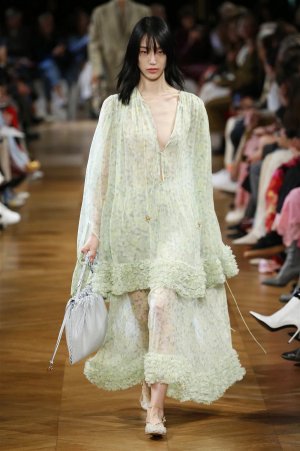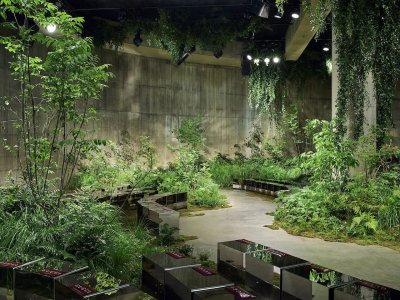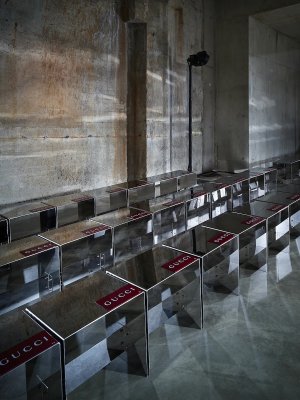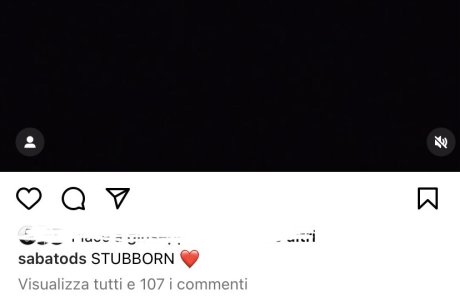-
The Red Carpet Highlights of... The 78th Annual Cannes Film Festival 2025!
-
MODERATOR'S NOTE: Please can all of theFashionSpot's forum members remind themselves of the Forum Rules. Thank you.
You are using an out of date browser. It may not display this or other websites correctly.
You should upgrade or use an alternative browser.
You should upgrade or use an alternative browser.
Gucci Cruise 2025 London
- Thread starter LadyJunon
- Start date
gallianostan
Well-Known Member
- Joined
- Sep 7, 2021
- Messages
- 1,146
- Reaction score
- 3,769
somehow it worked for themnot sure how serving “under a bridge” is going to elevate the brand…


TomBlanksFullFatMiuMiu
Well-Known Member
- Joined
- Apr 29, 2024
- Messages
- 1,209
- Reaction score
- 3,044
I think Frida is way better in terms of dresses and coats.^^
For what is worth, Sabato is technically ahead of Frida when it comes to design even if she is superior in terms of creative direction…
But at the same time, is Frida is our barometer, we wouldn’t get far…
SS06 and SS12 dresses/ gowns to die for!!!!
TomBlanksFullFatMiuMiu
Well-Known Member
- Joined
- Apr 29, 2024
- Messages
- 1,209
- Reaction score
- 3,044
Lola701
Well-Known Member
- Joined
- Oct 27, 2014
- Messages
- 12,691
- Reaction score
- 30,888
Frida was very basic construction. I have a SS06 dress, a wrap dress style with ruffles and the flora print.I think Frida is way better in terms of dresses and coats.
SS06 and SS12 dresses/ gowns to die for!!!!
She had basic construction. Yes sometimes the embellishment were OTT but when it comes to dressmaking and pants, I bet on Sabato again and again.
Creative
Well-Known Member
- Joined
- Oct 1, 2007
- Messages
- 5,445
- Reaction score
- 4,178
Nobody is bothered by him being happy. Let’s just not put things out of context. His Gucci is performing terribly and we just found funny how much time and how proud he look while bowing. Nobody has to be depressed, it’s just clothes, but seemed very delusional and, at least to me, hilarious.I hate to have to take up for Sabato but for people complaining about him smiling and being happy, do you expect him to come out for his bow like a wallflower and exhibit insecurities. That would be a worse look.
He likely knows that he is in over his head, suffering from imposter syndrome and was offered the opportunity of a lifetime.
It's such a silly critique.
I don’t hate the location btw. I don’t think it’s that bad, just 0 soul.
If you break it down piece by piece it’s quite “China” focused imo. There are some cute pieces, but Zara cute.
TomBlanksFullFatMiuMiu
Well-Known Member
- Joined
- Apr 29, 2024
- Messages
- 1,209
- Reaction score
- 3,044
Nobody is bothered by him being happy. Let’s just not put things out of context. His Gucci is performing terribly and we just found funny how much time and how proud he look while bowing. Nobody has to be depressed, it’s just clothes, but seemed very delusional and, at least to me, hilarious.
I don’t hate the location btw. I don’t think it’s that bad, just 0 soul.
If you break it down piece by piece it’s quite “China” focused imo. There are some cute pieces, but Zara cute.
I know what you mean.
In fact, he opened and closed the show with two Asian girl, so so so rare for an international brand. If they are aiming for the China focus effect, why not show in Shanghai like LV?
Maybe not the best comparison, but I wonder why Sabato's Zara is doing poorly while Miu Miu's Uniqlo is doing extremely well
Both are trying to make basic everyday clothes for rich people
If Lotta replace Alastair Mckimm as Gucci's stylist, do you think she can make Gucci cool?
TomBlanksFullFatMiuMiu
Well-Known Member
- Joined
- Apr 29, 2024
- Messages
- 1,209
- Reaction score
- 3,044
So make up is not Gucci Beauty's Thomas DK this time, they replaced him with Lucia Pieroni
Finally a woman at the creative table
CD, stylist, hair, make up, casting, music all white men bouncing ideas with each other in his past 3 shows
Finally a woman at the creative table
CD, stylist, hair, make up, casting, music all white men bouncing ideas with each other in his past 3 shows
Frederic01
Well-Known Member
- Joined
- Jun 7, 2021
- Messages
- 1,765
- Reaction score
- 4,132
WALLPAPER MAGAZINEGucci filled Tate Modern’s Tanks with thousands of plants for its latest Cruise show
Gucci’s Cruise 2025 show, the first by Sabato De Sarno, saw a ‘tapestry’ of plants fill the Herzog & de Meuron-designed Tanks in London’s Tate Modern as a dramatic backdrop to the show
The Gucci Cruise 2025 show set at the Tate Modern, featuring thousands of plants which will be donated after the show
(Image credit: Photography by Greg White)
The Italian creative director of Gucci, Sabato De Sarno – who began his tenure at the house in 2023 – has so far favoured a stripped-back approach to his runway shows, a symbolic departure from the theatrical runway presentations of his forebear Alessandro Michele. His last men’s and womenswear outings in Milan were shown in the Fonderia Carlo Macchi, a concrete-walled former industrial space on the outskirts of the city, with just monolithic Gucci-branded blocks as mise-en-scène (the exact shade: Gucci ‘Ancora’ red, the designer’s signature hue).
For his first Cruise outing for the house – the globe-trotting runway showssynonymous with far-flung locations and arresting show settings – the designer has taken a different tack. Taking place in London’s Tate Modernthis evening (13 May 2024), De Sarno transformed the gallery’s subterranean ‘tanks’ into a blown-up terrarium, filled with a lush jungle of around 10,000 different plants. Sabato describes it as a botanic ‘tapestry’, which after the show will be donated to community projects in London, including Life Under the Westway, an urban gardening project led by non-profit Grow to Know which will regenerate West London’s Westway-adjacent Maxilla Gardens.
First look: the Gucci Cruise 2025 show set at Tate Modern
’The Tanks’ were designed by Herzog & de Meuron and opened in 2012, seeing the Swiss studio excavate and transform three industrial cylinders which would have fuelled the turbines of the former power station which now houses the gallery. De Sarno noted a desire to bring the ’outside in’, imagining the sparse concrete space ’invaded by a poetic panorama of greenery’ in a clash of man and nature. He also noted a feeling of duality, a juxtaposition of what he sees as the two sides of London – its urban architecture versus its famous gardens and parks.
The various plants chosen were selected for their ability to grow in harsh and challenging conditions, making them easily transported to the various community growing projects after the show. These include Epimedium, Vinca, and Dryopteris, which grow well in shady city gardens, while larger shrubs and threes include Hornbeam, Parthenocissus, and Aesculus. Spring foliage, meanwhile, is selected to represent freshness and renewal.
It is also a nod, no doubt, to Gucci’s longtime links with botanicals: its most famous print, besides the house’s double-G monogram, is the ‘Flora’, which first appeared on a silk scarf in the 1960s. Comprising 43 varieties of flowers, plants and insects, the design by Italian illustrator Vittorio Accornero was created for the actress Grace Kelly and inspired by Botticelli’s ‘Allegory of Spring’. It is a motif that has long been part of the house’s heritage, inspiring the house’s 2017 fragrance Gucci Bloom. In March of this year, De Sarno revealed his own campaign for the fragrance, which saw models immersed in a pool of floating flowers.
Frida at least gives great show, an attitude a vibe you feel something with her show at least.
This I don't feel anything. He and his team have been making "a lot" of in consistent design as aesthetic decisions.
Who thought showing in the Tate's Tank was gonna elevate his clothes. The lighting was flat AF!
And yes it was Betak so we know what they can do. So they have all the best in the biz to put on a great show.
Lighting from the after party looks way better than the show it self? Cmon Sabato and team!
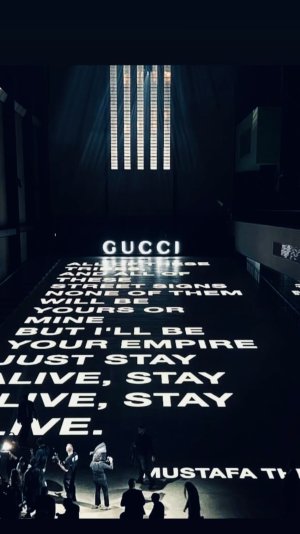
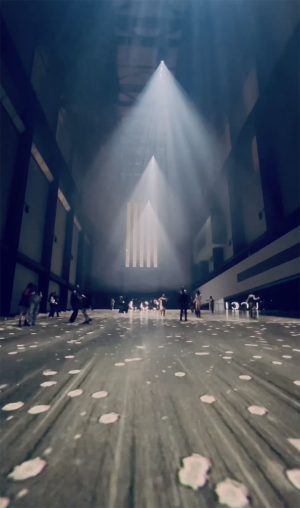
This I don't feel anything. He and his team have been making "a lot" of in consistent design as aesthetic decisions.
Who thought showing in the Tate's Tank was gonna elevate his clothes. The lighting was flat AF!
And yes it was Betak so we know what they can do. So they have all the best in the biz to put on a great show.
Lighting from the after party looks way better than the show it self? Cmon Sabato and team!


Alquimista
Well-Known Member
- Joined
- Oct 1, 2023
- Messages
- 897
- Reaction score
- 2,393
I just noticed none of girls are wearing high heels. It's weird.
Why those creative people can't understand that women love flat shoes and heels? This is basic stuff. Such one dimensional mindset.
Why those creative people can't understand that women love flat shoes and heels? This is basic stuff. Such one dimensional mindset.
It's so nothing. There's nothing left to say about the mess that is Sabotage de Sarno.
But, I am constantly amazed at how dumbed down designer clothes are now. The pattern making and savoir faire is not there anymore. These are clothes that are so easy to make, all things considered...you might think otherwise with the never ending price increases! And it's all by design. You can shove as many highly produced Instagram videos of the artisans making the pieces as you'd like...but you're not fooling me. These companies do not want to produce anything more complicated than a blazer anymore. That's why everything for every brand looks like Zara now - there's no room for experimentation within that kind of business strategy. It's also why "oversized" is so ubiquitous now...because it's the easiest way to give a basic garment "style" without having to do anything complicated or involved in the patterning and construction process...just extend the seams a few inches and presto...you get FASHUN.
But, I am constantly amazed at how dumbed down designer clothes are now. The pattern making and savoir faire is not there anymore. These are clothes that are so easy to make, all things considered...you might think otherwise with the never ending price increases! And it's all by design. You can shove as many highly produced Instagram videos of the artisans making the pieces as you'd like...but you're not fooling me. These companies do not want to produce anything more complicated than a blazer anymore. That's why everything for every brand looks like Zara now - there's no room for experimentation within that kind of business strategy. It's also why "oversized" is so ubiquitous now...because it's the easiest way to give a basic garment "style" without having to do anything complicated or involved in the patterning and construction process...just extend the seams a few inches and presto...you get FASHUN.
Frederic01
Well-Known Member
- Joined
- Jun 7, 2021
- Messages
- 1,765
- Reaction score
- 4,132
Vogue Runway just uploaded the accessories and oh dear they are weak. A lot of those bags are re-designs of Frida Giannini's bags, which makes no sense. And the shoes? TERRIBLE.
Sometimes I feel sorry for Sabato but then I think of the opportunity he has been given, the resources to hire the best talent in the world to support his vision, and everything that Kering can pay for as his disposal and I think, well maybe I shouldn't feel so bad for him. There are many designers that do much more interesting things with 1/10th of what he has at his fingertips.
There is no excuse for this mediocrity.
Sometimes I feel sorry for Sabato but then I think of the opportunity he has been given, the resources to hire the best talent in the world to support his vision, and everything that Kering can pay for as his disposal and I think, well maybe I shouldn't feel so bad for him. There are many designers that do much more interesting things with 1/10th of what he has at his fingertips.
There is no excuse for this mediocrity.
AlbertNoir
Well-Known Member
- Joined
- Dec 9, 2009
- Messages
- 9,815
- Reaction score
- 171
He needs to get of instagram and start sketching and thinking of a world with oxygen, flora, fauna and people for his Gucci, he’ll then atleast have something to be stubborn about. The whole show is terrible, the set creates an unnecessary contrast, filled with dying plants to be thrown away in the worst space of Tate. The styling is off and so passé I can’t even begint to dissect it. Nothing works. It’s all awful, it’s just a pile of stuff for stores. I also hate his use of typography, it’s so lame, so over.
Redundant, unbearable, wasteful.
Redundant, unbearable, wasteful.
gallianostan
Well-Known Member
- Joined
- Sep 7, 2021
- Messages
- 1,146
- Reaction score
- 3,769
The shade in his last post to Tim Blanks who called him stubborn. He is so full of himself, he thinks those who criticize him don't really understand his "complete" vision... pathetic"
View attachment 1270737






















what a child lmao
tourbillions
Well-Known Member
- Joined
- Dec 19, 2020
- Messages
- 2,039
- Reaction score
- 5,505
he really thinks he is something
GivenchyAddict
Well-Known Member
- Joined
- Feb 5, 2012
- Messages
- 2,391
- Reaction score
- 6,180
The way Kering will get rid of him will make him humble very soon... They did not hesitate to say Bye to Alessandro who is 1000x superior to him.
Creative
Well-Known Member
- Joined
- Oct 1, 2007
- Messages
- 5,445
- Reaction score
- 4,178
Wow, I didn’t expect him to be that arrogant! This guy is beyond delusional but has the depth of a little puddle in the middle of the street.
His references, his choices, his Instagram, his collections and his campaigns are the definition of “basic”. I will always get suprised by how far these empty-brain people that in a normal world would be a stylist assistant can go.
His references, his choices, his Instagram, his collections and his campaigns are the definition of “basic”. I will always get suprised by how far these empty-brain people that in a normal world would be a stylist assistant can go.
Similar Threads
- Replies
- 1
- Views
- 1K
- Replies
- 30
- Views
- 5K
Users who are viewing this thread
Total: 1 (members: 0, guests: 1)
New Posts
-
Gucci 'Gucci by Gucci' Fragrance 2006 : Freja, Raquel & Natasha by Inez & Vinoodh (3 Viewers)
- Latest: Gonzalo
-
Louis Vuitton x Murakami 2025 : Zendaya by Inez van Lamsweerde & Vinoodh Matadin (11 Viewers)
- Latest: Gonzalo
-
-
-

